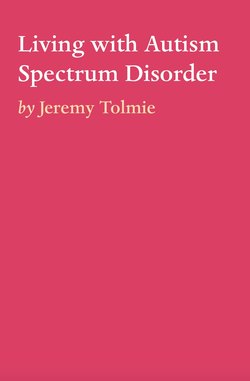Читать книгу Living with Autism Spectrum Disorder - Jeremy Tolmie - Страница 9
На сайте Литреса книга снята с продажи.
Patterns of behaviour
ОглавлениеA child or adult with autism spectrum disorder may have limited, repetitive patterns of behaviour, interests or activities, including any of these signs:
Performs repetitive movements, such as rocking, spinning or hand flapping
Performs activities that could cause self-harm, such as biting or head-banging
Develops specific routines or rituals and becomes disturbed at the slightest change
Has problems with coordination or has odd movement patterns, such as clumsiness or walking on toes, and has odd, stiff or exaggerated body language
Is fascinated by details of an object, such as the spinning wheels of a toy car, but doesn't understand the overall purpose or function of the object
Is unusually sensitive to light, sound or touch, yet may be indifferent to pain or temperature
Doesn't engage in imitative or make-believe play
Fixates on an object or activity with abnormal intensity or focus
Has specific food preferences, such as eating only a few foods, or refusing foods with a certain texture
As they mature, some children with autism spectrum disorder become more engaged with others and show fewer disturbances in behaviour. Some, usually those with the least severe problems, eventually may lead normal or near-normal lives. Others, however, continue to have difficulty with language or social skills, and the teen years can bring worse behavioural and emotional problems.
